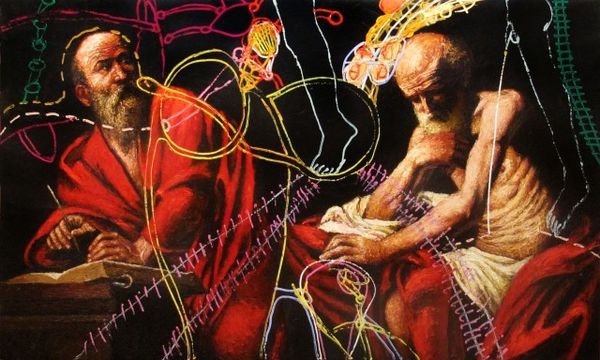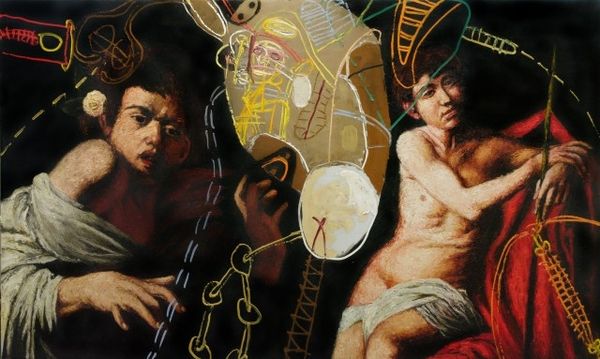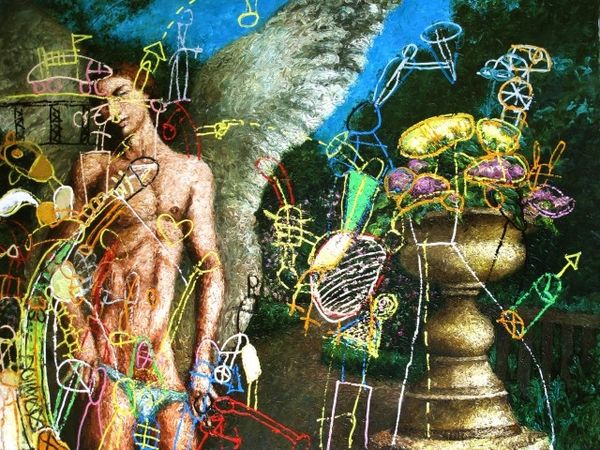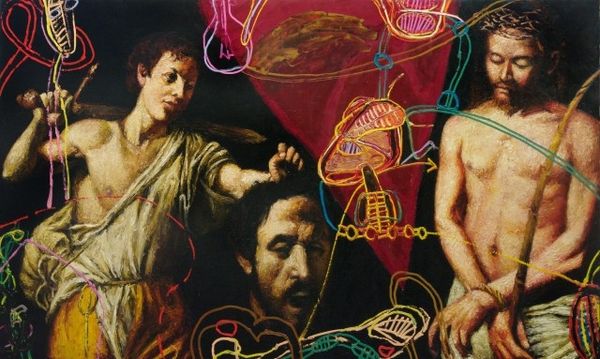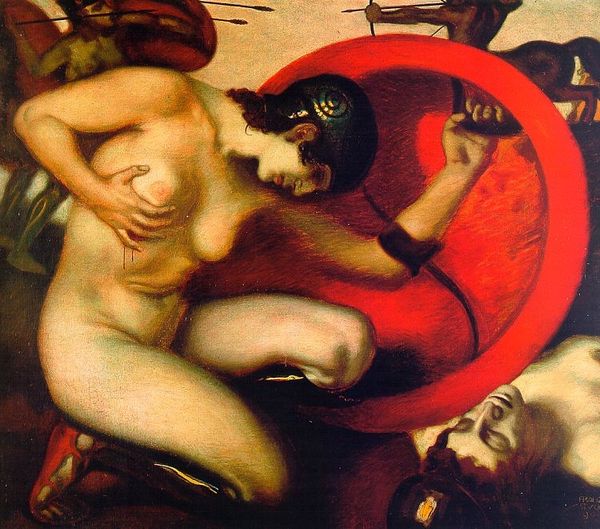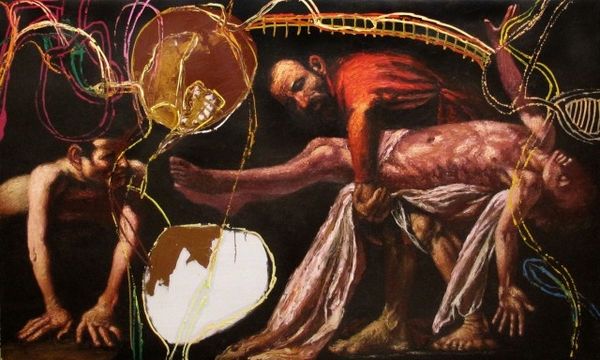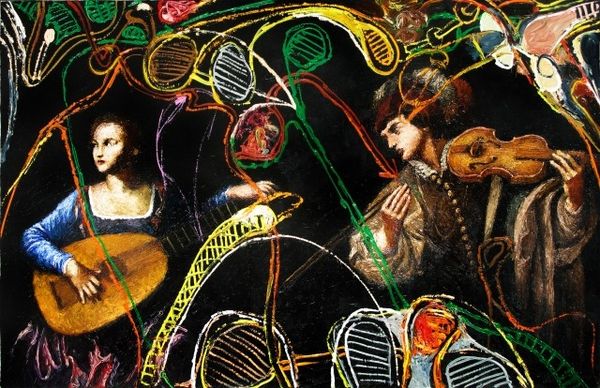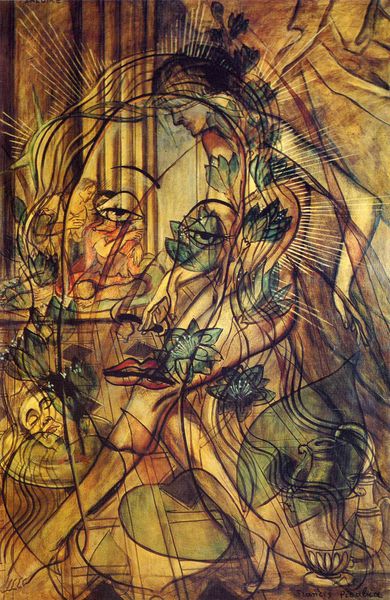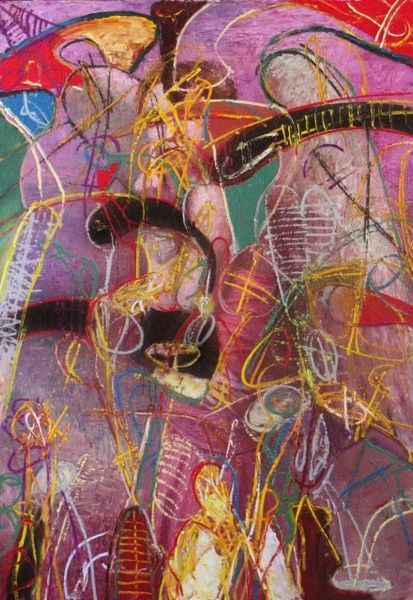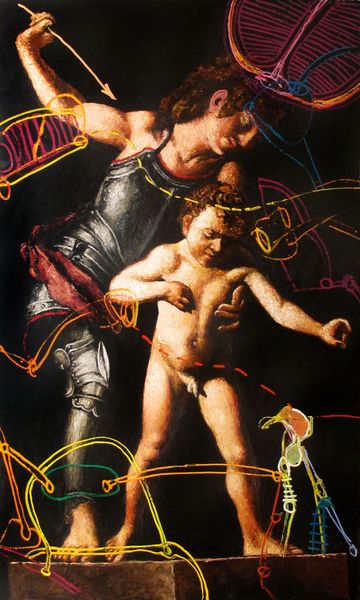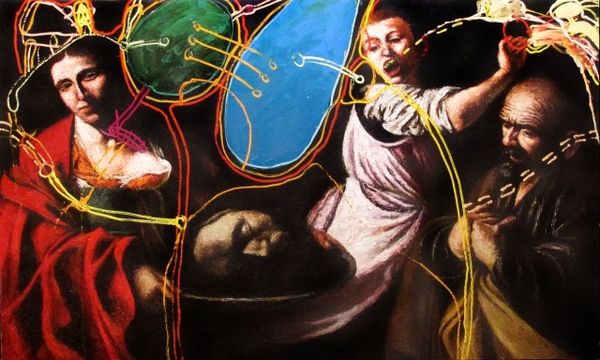
mixed-media, collage, painting, acrylic-paint, frottage
#
portrait
#
mixed-media
#
collage
#
painting
#
graffiti art
#
appropriation
#
acrylic-paint
#
figuration
#
neo expressionist
#
acrylic on canvas
#
neo-expressionism
#
history-painting
#
modernism
#
frottage
Copyright: Alexander Roitburd,Fair Use
Editor: Here we have Alexander Roitburd's "Roitburd VS Caravaggio. Opus # 002" from 2009, a mixed-media piece incorporating acrylic paint, frottage, and collage elements. The combination of classical figuration with what looks like graffiti is pretty striking. How do you interpret this collision of styles and eras? Curator: It's a powerful clash, isn't it? Roitburd directly confronts art history, specifically Caravaggio, layering contemporary interventions over it. What does this act of appropriation say about how we engage with the past in the present? Think about how cultural memory functions. Editor: It almost feels like he's defacing a masterpiece, but in a thoughtful way. The graffiti elements, or whatever they represent, draw your attention to specific parts. Curator: Exactly. Is he critiquing the canon, claiming it, or something in between? Consider the socio-political context of Roitburd’s work. He’s Ukrainian, making art in a post-Soviet, increasingly globalized world. How might that inform his artistic choices? Does this blend of styles mirror a blending of cultures or a disruption of traditional hierarchies? Editor: That's a good point; I was only looking at the Western art historical context. It makes you wonder about cultural identity and artistic freedom, especially coming from a place with a complex history. Curator: Precisely! He prompts us to examine not only what we see but also the narratives and power structures embedded within art history itself. What happens when those structures are questioned, even vandalized? Editor: This piece definitely gives me a lot to think about, especially in terms of challenging established ideas around art and identity. Thanks! Curator: My pleasure. It shows how even historical techniques, like painting and collage, can be revived for current conversations on post-modern theory and identity politics.
Comments
No comments
Be the first to comment and join the conversation on the ultimate creative platform.
